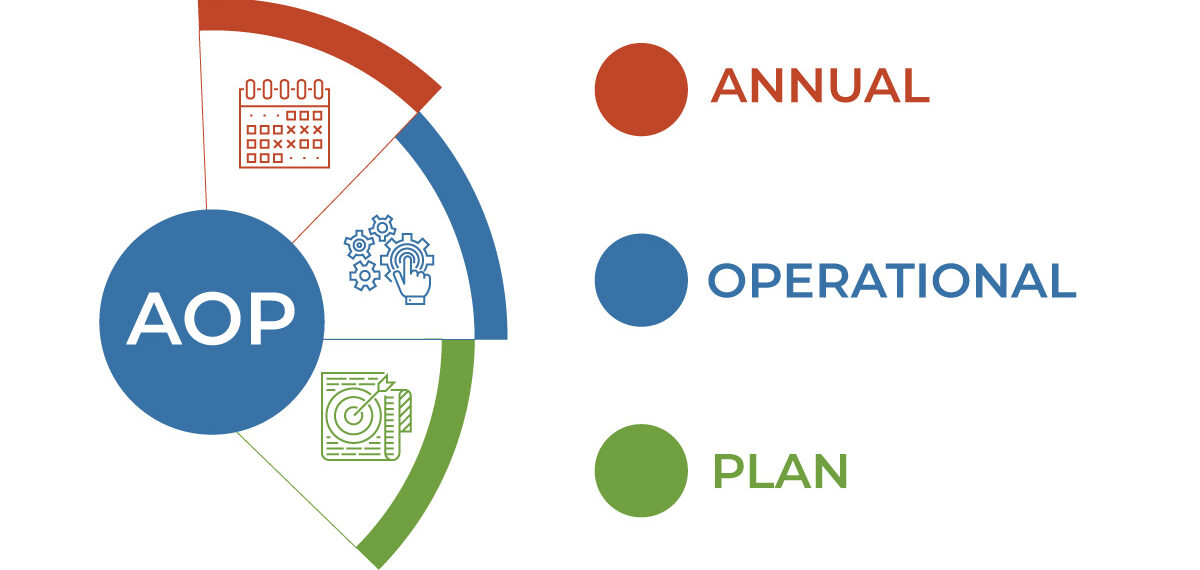Hit the Ground Running in 2022 with an Annual Operating Plan
Every January 1st, millions of Americans make New Year’s resolutions, and by the end of February, nearly 80% of people fail to keep their goals. By failing to keep yearly goals, businesses risk severe consequences and miss out on the opportunity to manage their business more productively. An Annual Operating Plan (AOP) is a comprehensive document with goals, Key Performance Indicators, and Budgets to help a company achieve clear objectives. Creating a company’s AOP is like having a New Year’s Resolution, but it should be made with a set path to plan for priorities and manage the company’s future proactively.
Creating an Annual Operating Plan
An AOP can be made at any time during the year, but it is most effective when done before the Fiscal New Year to take advantage of tax planning strategies and to start the new year off ready for the post-holiday slowdown most companies face.
There are several components of an Annual Operating Plan that are important to take into consideration to optimize benefit.
01. Gather a Diverse Team
The strength of a company’s plan is connected to its execution, and who better to know what employees are capable of better than the employees themselves? Whether a company has 10 or 10,000 employees, having them represented in the decision-making process is essential. Giving employees a voice in the plan will provide the company with a better perspective of what goals are reasonable, as well as increasing their investment in the company’s future.
Along with key players within the company, hiring an outside consultant will help create an effective plan. A financial consultant has years of experience dealing with AOPs and knows how to analyze data in a way that is accurate and understandable.
02. Analyze previous years
Go through financial statements, Budgets, reports, and any other documents from previous years to lay a foundational understanding of how a company works and use the results to lend knowledge in creating an AOP. Certain months during the year are busier than others and knowing this can help build a budget that matches the needs and expenses tied to these times.
03. Set Realistic Objectives
Objectives are big-picture goals for the company and should have measurable outcomes, such as increasing sales by a certain number or reducing waste. A company should set no more than five major objectives to make focusing on the essential aspects of the company easier.
When setting objectives, ask questions about the company’s status.
- What departments are performing well or underperforming?
- What is increasing or decreasing the bottom line?
- What procedures should be changed and improved?
- Where are there inefficiencies?
- Do the company’s systems need to be evaluated?
Determine what the company needs to achieve during the next year and set objectives that will improve the overall performance of the business.
04. Find Key Performance Indicators (KPIs)
Once set, decide what measurable actions lead to accomplishing the company’s goals. What activities are employees going to take to increase these goals? Limit the number of KPIs so that data can be easily reviewed.
Key Performance Indicators should be a specific numerable goal for each employee and department to achieve. Specific KPIs will allow employees and managers to focus on what is most important.
05. Make Monthly Budgets
Sticking to a large yearly budget is easiest when broken down from month to month. Choose either a top-down or bottom-up budget and allow each month to be treated separately to accommodate changes in revenue.
Businesses often have varying needs throughout the year, depending on the quarter. Budgeting for increases in the cost of goods or buying long-term assets prevents companies from overspending during less profitable quarters.
06. Plan for Failure
Consider possible setbacks when creating an AOP. What could stop the company from achieving its goals? What could go wrong in every aspect of the company? Build possible solutions into the Annual Operating Plan. The company will then be prepared if a setback arises.
07. Revisit Regularly
Choose times throughout the year to return to the plan to see the progress made towards the company’s goals outlined in the AOP. Analyze KPIs to determine how close the company is to achieving its goals. If an indicator is lagging determine what factors are hindering it.
For example, consider a company with an objective to increase sale revenue by 30% and a Key Performance Indicator goal of improving the number of sales calls by five calls per day. This company needs to see how many calls are being made. If the actual number of calls is less than the goal, the company can investigate what is preventing sales personal from meeting it. By checking in with their AOP, this company would be able to make changes early in the year; giving them more time to make their objectives a reality by creating accountability within each department and employee.
THE TOP 7 STEPS TO CREATE YOUR ANNUAL OPERATING PLAN
Fill out the form below to find out.
Get Your Free Consultation
Gain Financial Visibility Into Your Business
We provide outsourced, fractional, and temporary CFO, Controller, and Operational Accounting services that suit the needs of your business.
- Hourly Rates
- No Hidden Fees
- No Long Term Requirements
NOW CFO’s consultants provide the highest level of expertise in finance and operational accounting to accelerate results and achieve strategic objectives for sustainable growth and success.
After completing the form, a NOW CFO Account Executive will reach out and learn more about your needs so that we can pair you with the right Partner.



